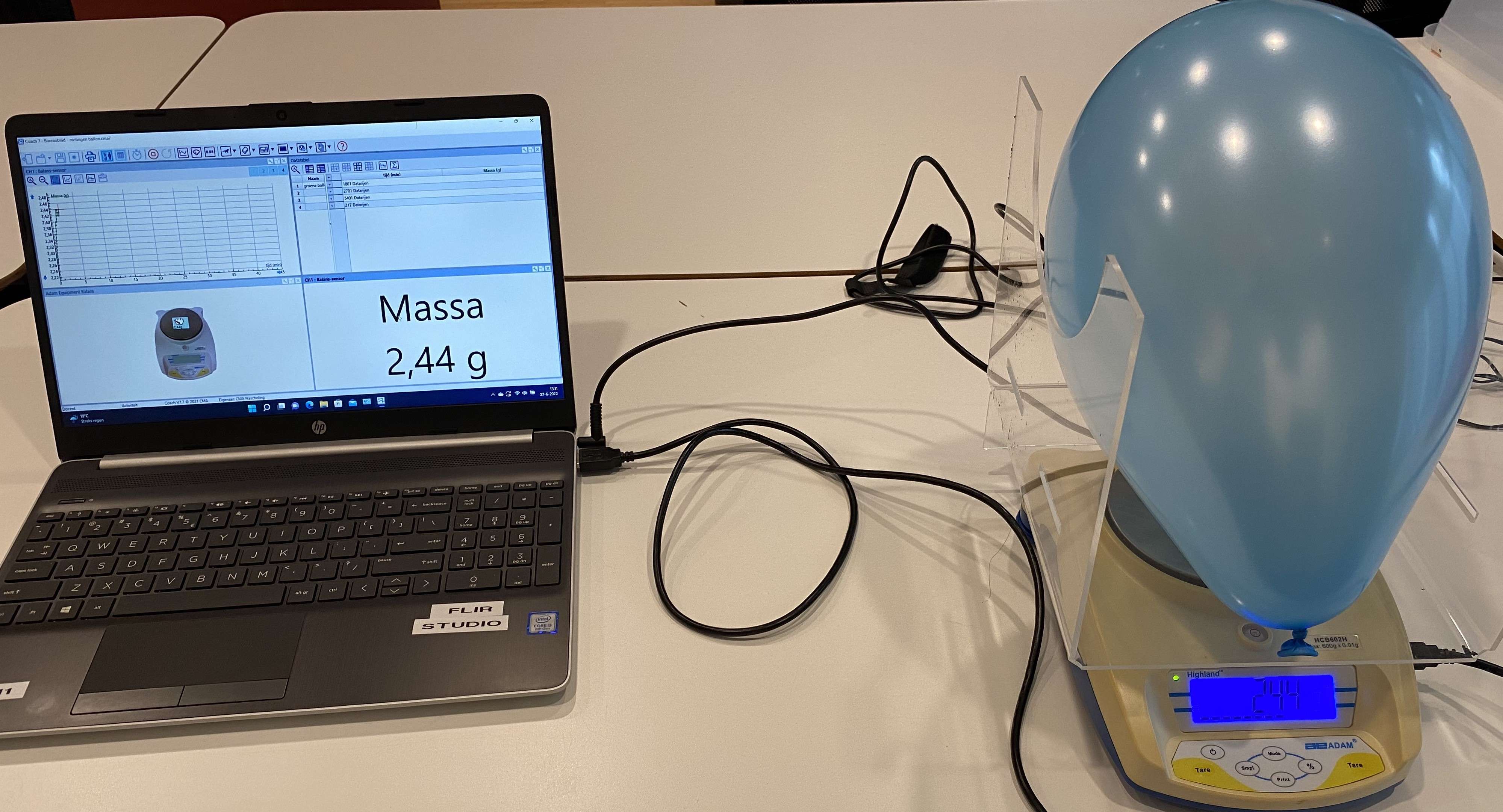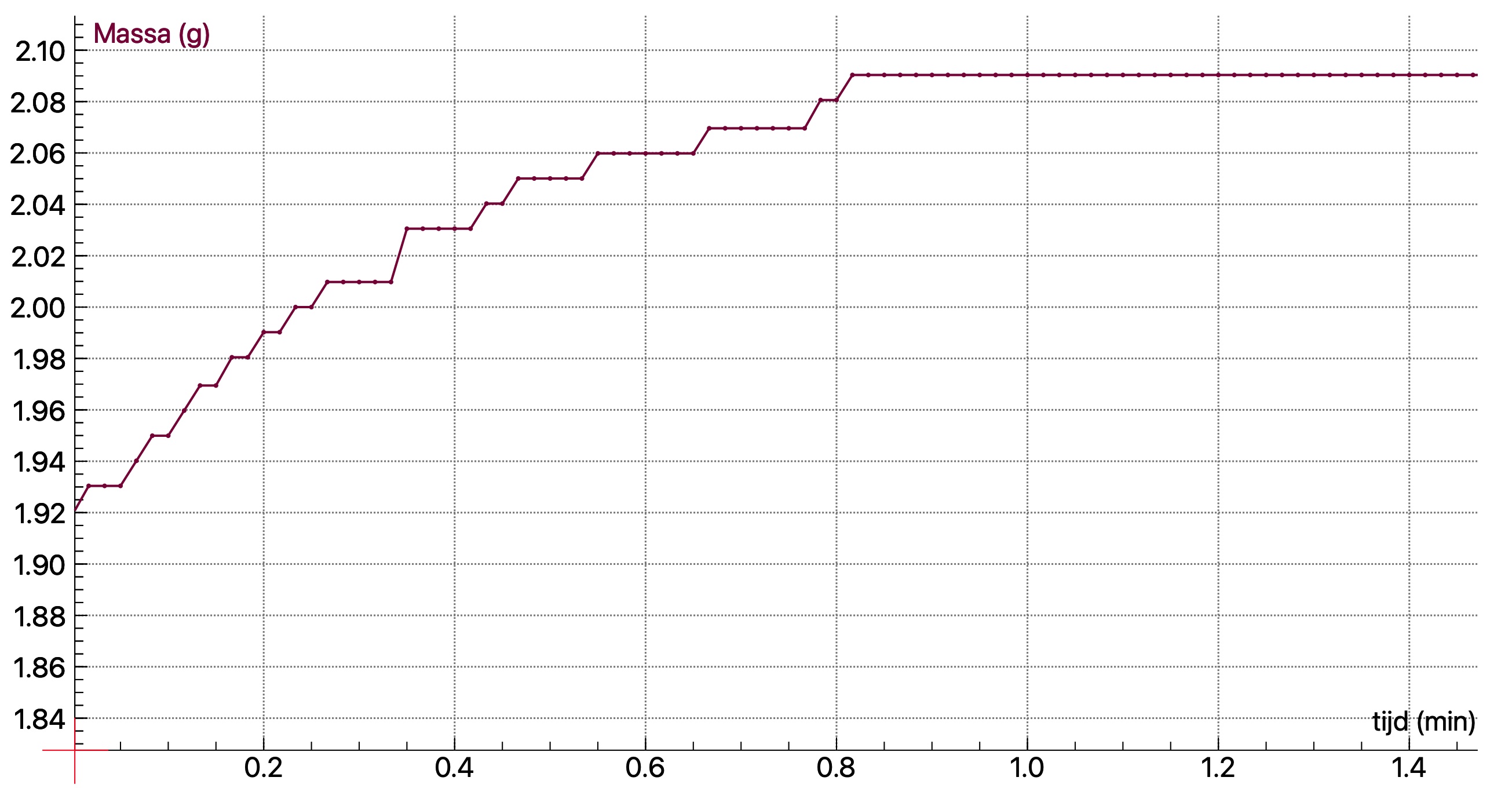14.10. Powerful Balloon#
A surprisingly revealing measurement
| Author: | Norbert van Veen |
| Time: | 5-10 minutes |
| Age group: | 14-18 |
Introduction#
All students have blown up a balloon at some point in their lives, but they usually don’t consider the physics of balloons and, for instance, what happens inside the balloon. In this demonstration, you can show various processes happening inside the balloon. Here you obtain some ‘unexpected’ results when measuring its weight.

Fig. 14.20 The balloon on the electronic scale connected to the computer. This way, you can display a graph with the value indicated by the scale.#
Equipment#
Balloon
Electronic scale with USB output
Computer with software to read out the electronic scale (or digital scale with a camera directed at it)
Transparent stand to clamp the balloon in
Preparation#
Turn the scale on with the stand for the balloon on it. Set the scale to 0.00 g using the ‘tare’ button if necessary. Set the measurement frequency to two measurements per second.
Procedure#
Explain to the students how the demonstration works.
Let students predict what the scale will indicate and why.
Inflate the balloon and place it directly in the stand on the scale. Perform the measurement.
Show with the graph that the mass of the balloon increases significantly in the first two minutes.
What could be an explanation?
Provide the explanation of the demonstration.
Questions to check students’ understanding: Why does an object become heavier when you lift it out of the water? Why does a hot air balloon have more buoyant force when the air inside it is warmer? What are the pressure and temperature in the balloon before the start of the experiment (just after inflating) and after reaching the equilibrium mass?

Fig. 14.21 Change in mass due to cooling of the balloon.#
Physics background#
Two forces act on the balloon: an upward buoyant force and gravity downward. In an inflated balloon, the air temperature is about 37 °C. This is warmer air than outside the balloon. The air in the balloon will cool down by heat transfer to the surroundings. Lower temperature air corresponds to lower pressure. The volume of the balloon will decrease.
Since the buoyant force is proportional to the volume of the balloon, this force will decrease. Thus, the scale will indicate a higher mass. The mass change is on the order of a few tenths of a gram and can be accurately measured with an electronic scale. An indication of the volume difference can be calculated using the buoyant force formula:
With a mass difference of 0.20 g, we calculate that the balloon’s volume reduction is 150 mL. Our balloon, with a ‘radius’ of 10.0 cm, has a volume of approximately 4.2 L. The radius of the balloon with a volume of 4.05 L is 9.99 cm. This volume change is not noticeable with the naked eye.
The effect is most noticeable just after inflating. After a few minutes, the equilibrium mass is reached, and the pressure in the balloon equals the outside air pressure plus the balloon’s pressure. The temperature of the air in the balloon then equals the ambient temperature.
Tip
In addition to the graph, you can also display the mass value on a screen. Film or photograph with a FLIR-C5 camera to show that the balloon’s temperature is higher than the outside temperature. Heat (the air in) the balloon with a hairdryer if desired to make the effect stronger. Place the balloon on a tube or cup for better support against movement due to air currents and the like.
Follow-up#
There are more demonstrations available, for instance Rotating Balloon, A Balloon that Can Do Everything and Air is not nothing: weighing air.
Tip
It is interesting to know (and show) when the pressure inside the balloon is maximal. Surprisingly it is when the balloon is very small. This can be observed by filling the balloon which is hardest when it is empty, or by releasing it with sound. The pitch is highest at the last part, when the balloon is almost empty.
